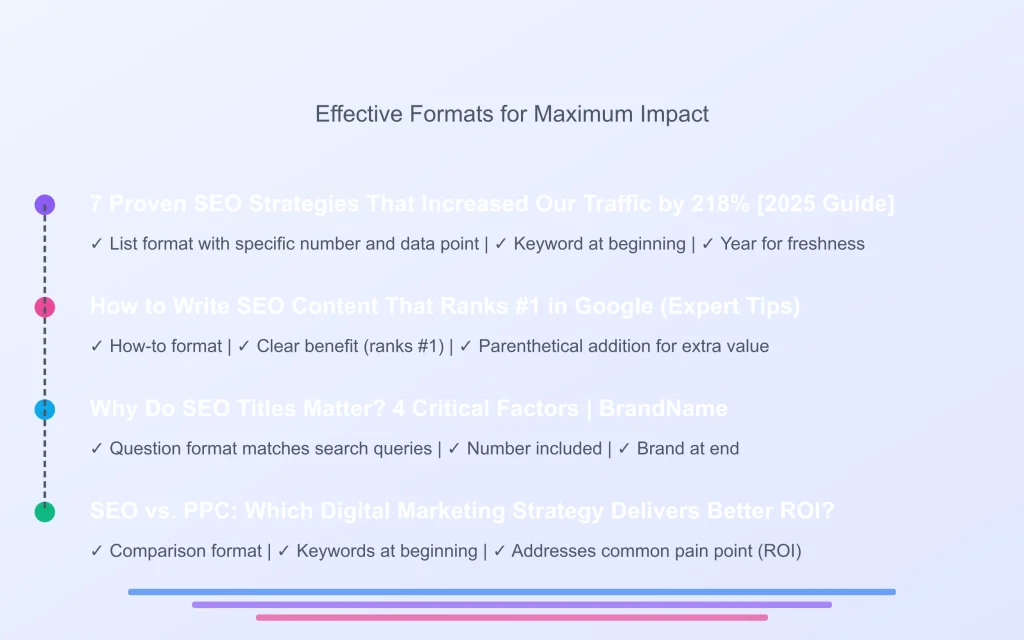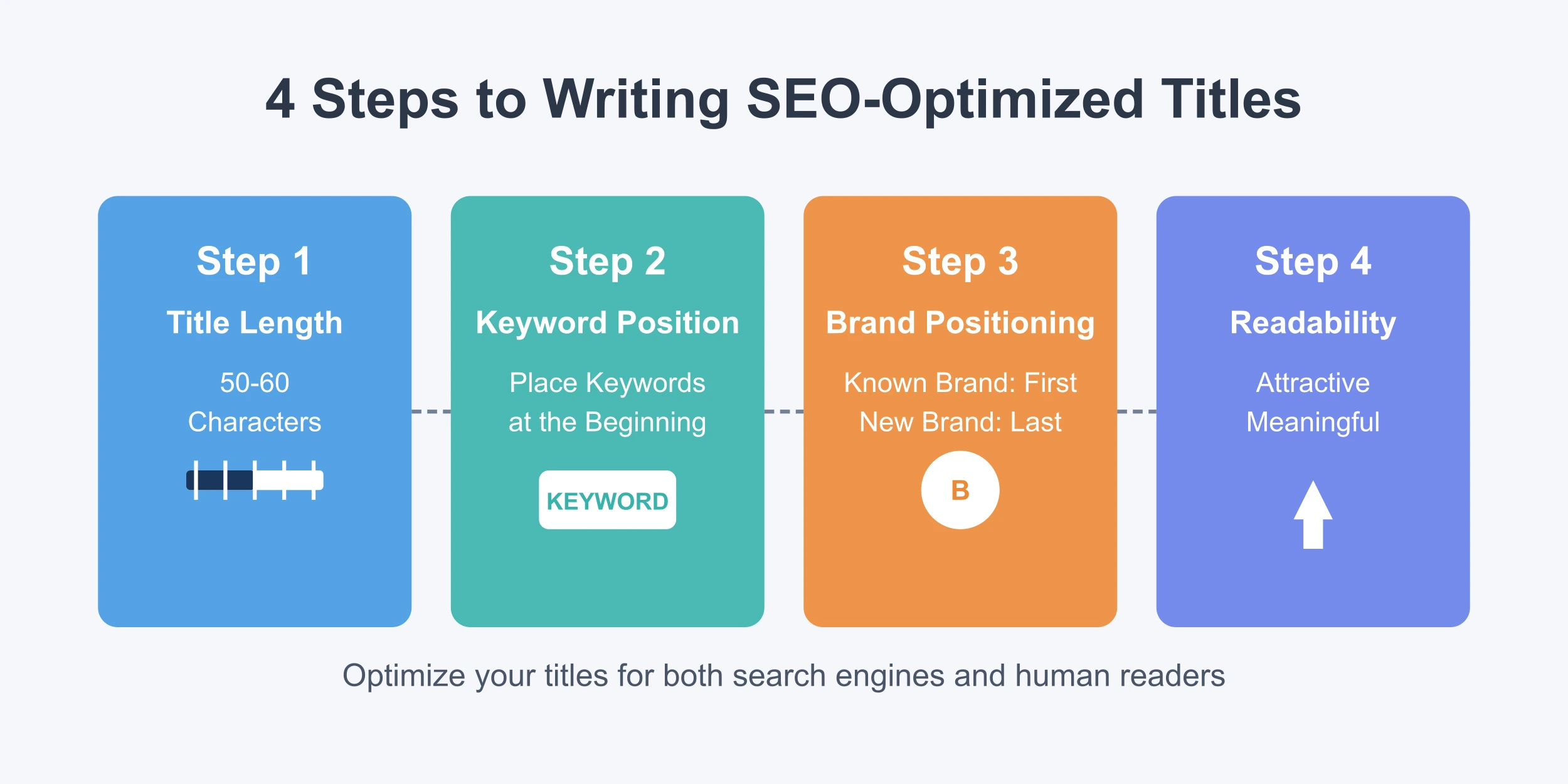Writing a Search Engine Optimized Title: The Complete Guide
In today’s digital landscape, your content’s title serves as both its first impression and primary gateway to discovery. With millions of pages competing for attention, a strategically crafted title can make the difference between visibility and obscurity. This comprehensive guide explores the four essential steps to creating titles that not only rank well in search results but also compel readers to engage with your content.
Why SEO Titles Matter
Before diving into the methodology, it’s important to understand the dual purpose of an SEO title. First, it communicates to search engines what your content is about, influencing how and where your page appears in search results. Second, it creates that critical first impression that determines whether a potential reader clicks through to your content or scrolls past it. The perfect SEO title achieves both technical optimization and psychological appeal.

Step 1: Optimize Title Length
The ideal length for an SEO title falls between 50-60 characters. This range ensures your title displays properly across various devices and search platforms without being truncated. Shorter titles may fail to include necessary keywords and context, while longer ones risk being cut off in search results with an ellipsis (…), potentially hiding crucial information.
When crafting your title, consider these length-related factors:
- Search engines typically display the first 50-60 characters of a title tag
- Mobile devices show even fewer characters than desktop views
- A concise title forces clarity and specificity
- Every character should serve a purpose, whether for search optimization or reader appeal
Step 2: Position Keywords Strategically
Keyword placement significantly impacts your title’s SEO effectiveness. Search engines give more weight to words appearing earlier in a title, making the beginning position premium real estate for your most important keywords.
To implement this strategy effectively:
- Research relevant keywords using tools like Google Keyword Planner or SEMrush
- Identify your primary keyword (the term most relevant to your content)
- Place this primary keyword as close to the beginning of the title as possible
- Ensure the keyword placement still creates a natural, readable title
- Avoid keyword stuffing, which can trigger spam filters and deter readers
Step 3: Incorporate Branding Strategically
Your approach to including brand names in titles should reflect your current market position. This decision requires honest assessment of your brand recognition and value.
For established brands:
- Place your brand name at the beginning of the title to leverage existing recognition
- Use a format like “Brand Name: Keyword-Rich Description” to capitalize on brand equity
- Consider using a separator like a colon or pipe symbol to create clear distinction
For emerging or unknown brands:
- Position your brand name at the end of the title
- Focus on valuable keywords and compelling content promises first
- Use a format like “Keyword-Rich Description | Brand Name”
- As recognition grows, test moving your brand position forward in titles
Step 4: Enhance Readability and Click Appeal
The technical aspects of SEO are crucial, but ultimately, your title must appeal to human readers. A technically perfect but dull title will underperform compared to one that generates genuine interest.
To maximize click-through potential:
- Create a sense of urgency or value (without resorting to clickbait tactics)
- Use powerful, emotional words that evoke curiosity or promise benefits
- Consider using numbers to indicate list-based content (like this article)
- Incorporate questions that match common search queries
- Test different emotional approaches: problem-solving, curiosity-inducing, or benefit-focused
- Ensure the title accurately represents the content to maintain trust
Measuring and Improving Title Performance
Optimization is an ongoing process. After implementing these four steps, track your titles’ performance through:
- Click-through rates in Google Search Console
- Engagement metrics in your analytics platform
- Search position tracking for target keywords
- A/B testing different title variations on similar content
When a title underperforms, analyze which element might be failing—length, keyword position, brand placement, or emotional appeal—and adjust accordingly.
Conclusion
Creating search engine optimized titles is both science and art. The technical foundations—proper length, strategic keyword placement, and appropriate brand positioning—provide the structure, while readability and emotional appeal provide the spark that drives engagement. By mastering these four critical steps and continuously refining your approach based on performance data, you’ll create titles that not only rank well but also genuinely connect with your target audience, driving sustainable traffic growth for your content.

